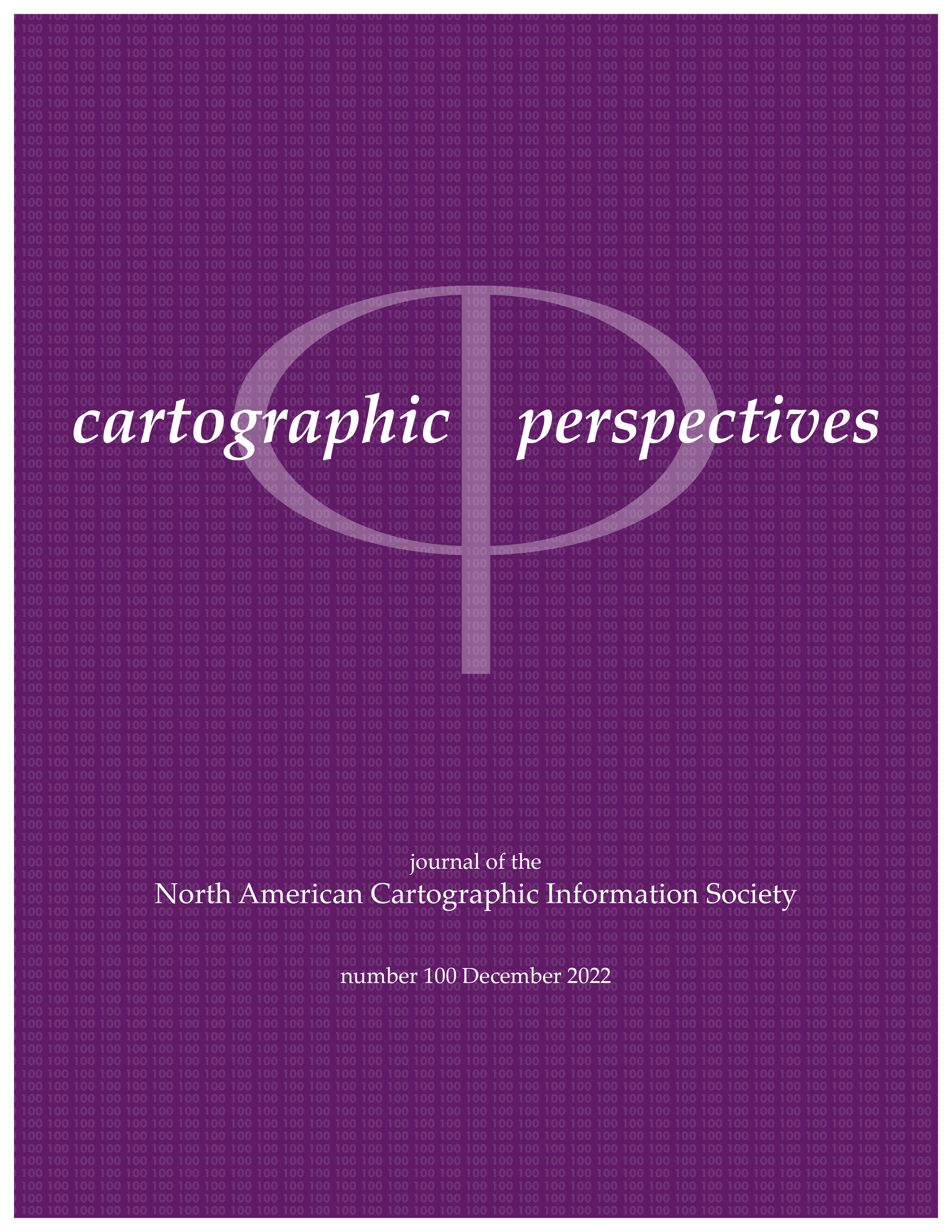That’s a Relief: Assessing Beauty, Realism, and Landform Clarity in Multilayer Terrain Maps
DOI:
https://doi.org/10.14714/CP100.1727Abstract
Terrain maps are often composed of shaded relief along with other raster layers which we call thematic terrain layers to create aesthetically pleasing and clear maps of physical geography. Despite that the interplay of layers is of primary concern to a cartographer, much of the research on terrain mapping has focused on studying terrain layers individually. This research aimed to fill this gap by evaluating the effect of combining shaded relief with thematic terrain layers and assessing ratings of beauty, realism, and landform clarity in an exploratory online user study. Specifically, we tested the combination of: manual, multidirectional, and ray-traced shaded relief with three thematic terrain layers: hypsometric tinting, land cover, and orthoimagery. There are five main findings from this exploratory study: (1) there was a direct correlation between beauty and realism scores, (2) the manual relief we tested was consistently rated lowest for beauty, realism, and landform clarity, and orthoimagery was rated the highest for beauty and realism, (3) shaded relief was more influential than thematic terrain layers on landform clarity ratings, (4) participant’s geographic familiarity had a significant impact in four specific instances of the user study, and (5) neither shaded relief or thematic terrain layers were the sole contributors to map reader perceptions of beauty, realism, or landform clarity. We conclude by identifying limitations in our stimuli design and presenting ideas for future research studies on terrain design.
Published
How to Cite
Issue
Section
License
Copyright (c) 2022 Nathaniel A. K. Douglass, Carolyn S. Fish

This work is licensed under a Creative Commons Attribution-NonCommercial-NoDerivatives 4.0 International License.
Authors who publish with this journal agree to the following terms:- Authors retain copyright and grant the journal right of first publication, with the work simultaneously licensed under a Creative Commons Attribution License that allows others to share the work with an acknowledgement of the work's authorship and initial publication in this journal.
- Authors are able to enter into separate, additional contractual arrangements for the non-exclusive distribution of the journal's published version of the work (e.g., post it to an institutional repository or publish it in a book), with an acknowledgement of its initial publication in this journal.
- Authors are permitted and encouraged to post their work online (e.g., in institutional repositories or on their website) prior to and during the submission process, as it can lead to productive exchanges, as well as earlier and greater citation of published work (See The Effect of Open Access).




